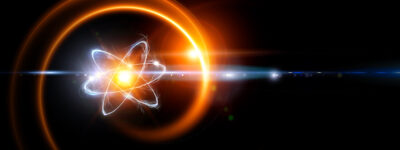Nuclear theory
Nuclear-reaction theory
The physics of low-energy nuclear reactions is essential to explain the evolution of the Universe. nuclear reactions characterize the different phases in a variety of astrophysical environments, from hydrogen burning in main-sequence stars to explosive nucleosynthesis during the last stages of stellar evolution. In this context, the properties of nuclear systems away from stability provide invaluable insight. Moreover, understanding the mechanisms of nuclear collisions has implications beyond nuclear astrophysics, with applications in energy, medical and material sciences.
At ECT*, research on nuclear-reaction theory is carried out to answer questions regarding the structure and reaction dynamics of weakly bound systems. For exotic nuclei at the limit of nuclear stability, coupled-channels methods are used to incorporate continuum effects. This includes the description of i) radiative capture reactions, ii) low-energy breakup, transfer and proton-target knockout reactions, and iii) nucleon-nucleon correlations in two-nucleon decays.
Nuclear many-body theory and infinite matter
The study of nuclear systems, from finite to infinite ones, requires the knowledge of the nuclear interaction and the choice of a many-body approach to solve the Schrödinger equation.
On one side, the nuclear interaction can be constructed as an effective interaction which is fit to reproduce the properties of either finite nuclei along the nuclear chart or even infinite matter, and the Schrödinger equation can usually be solved within the mean-field approximation. This approach goes under the name of energy-density functional theory.
On the other side, one can construct a realistic interaction which is instead fit to reproduce the nucleon-nucleon scattering data or even properties of few-body systems. In this latter case on then needs to solve the many-body problem via more sophisticated approximations beyond the mean-field level, in order to build in the nuclear correlations. This defines the so-called ab initio nuclear theory. The main difference between the two approaches is that the former is strongly model dependent, while the latter strives to be predictive.
We are investigating both zero and finite-temperature properties of nuclear matter, with the objective of providing model-independent nuclear physics input for the determination of the neutron star equation of state, to be used in astrophysical simulations of core-collapse supernovae and binary neutron star mergers.
